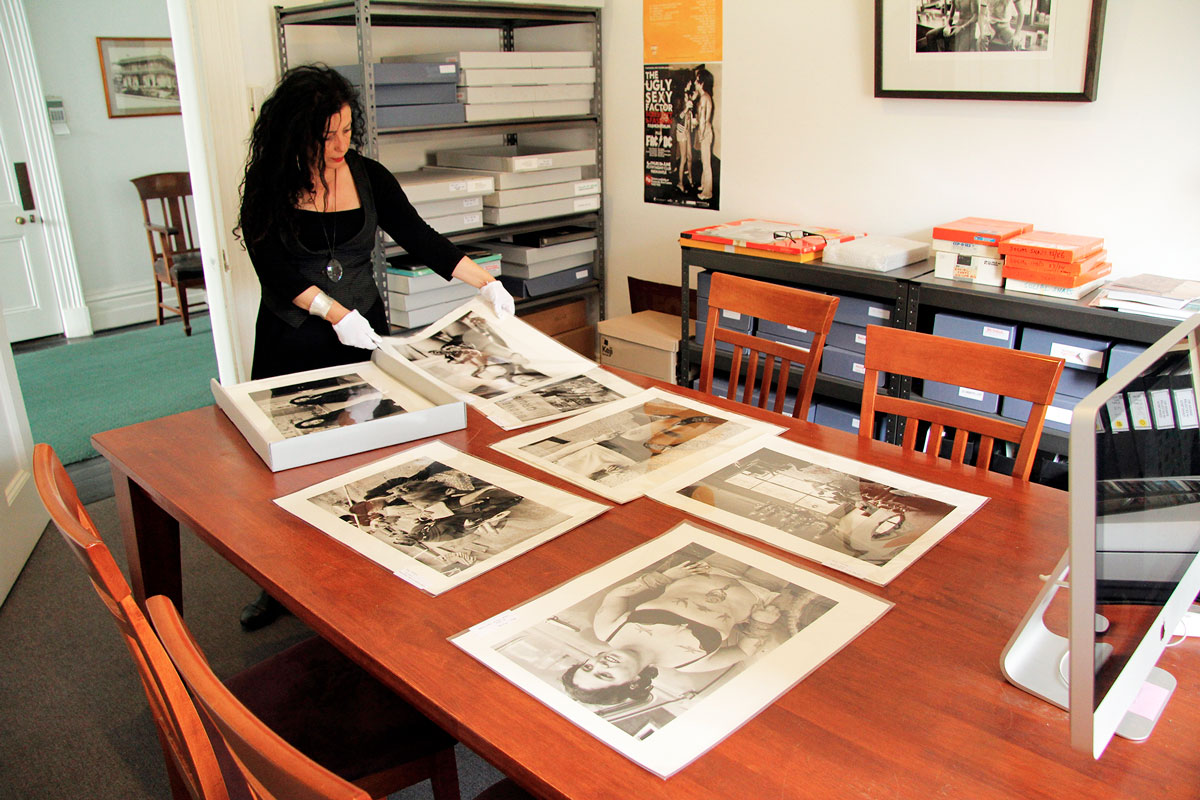
Manuela Furci in the Rennie Ellis Archive in St Kilda (Melbourne)
This November 2025 piece is about recognising the valuable work by Manuela Furci who from 2004 till recently was the Director of the Melbourne based Rennie Ellis Archive. This archive service is unique in Australia given its long run over 21 years as a photographer’s archive managed full-time as a commercial philanthropic legacy venture1.
Note: The archive is still operating; see the link at end of this essay.
I recently interviewed Manuela Furci about the archive and service that she founded soon after Rennie Ellis’s sudden death at age 62 on 19 August 2003. Manuela was Rennie’s personal assistant for the ten years before his death. She managed the archive in collaboration with Rennie’s widow Kerry Oldfield Ellis.
Rennie’s death left in jeopardy his huge archive of commercial studio work as well as a large picture library of others images. Manuela and Kerry stepped up to keep the archive as a living entity.
Some photographers get to make arrangements for the future of their archive in their lifetimes. I have written about how Robert McFarlane (1942–2023) over a decade up to his own final illness worked on placement of his archive with the National Library of Australia in Canberra.
Other now deceased mid-late 20th century figures Max Dupain, Olive Cotton, Wolfgang Sievers, David Moore, Athol Shmith and Maggi Diaz made archive arrangements before incapacity or final illness. The Henry Talbot Fashion archive exists at the National Gallery of Victoria as well as other material at the Powerhouse Museum in Sydney.
Among current artists, Ponch Hawkes, William Yang, Mervyn Bishop and Lorrie Graham have secured large archives with their respective New South Wales and Victorian State Libraries collection. David Beal is currently digitizing his archive for the Powerhouse Museum in Sydney.
I plan to post on the recent acquisition of the Mervyn Bishop and Lorrie Graham archives by the State Library of New South Wales. Both are the subject of current or forthcoming publications and exhibitions. I will also look at other whole-of-life photographer archives, archivists and archive services including the role of custom printing in Australia as well as a few international examples.
Major survey publications count as archiving, an example being Juno Gemes, 2024 book Until Justice Comes. For others their archive placement and legacy enhancement is done posthumously through the efforts of family, supporters and dealers.
It is worth noting that by the time of his death in 1992 Max Dupain was nationally celebrated for his black and white documentary record of basically middle-Australia from the mid 1930s–1980s. Whereas Rennie Ellis recorded a grass roots often larrikin spirited and a very wide spectrum of multicultural and post war baby boomer Australians in black and white and colour.
Rennie Ellis’s photography had been collected by art museums in the 1970s–1990s but his persona was seen as a hyper energetic bon vivant local lad. In Furci and Oldfield’s view, Rennie Ellis needed more serious collector and museum substance and for his legacy to be secured for the future.
In 2004 there were few models of photographic archives as businesses in Australia to look to for guidance. The remarkable efforts of Tony Penrose at the Lee Miller Archives founded in 1984 in Sussex, England might have provided some clues2. In Sydney from 1995 ‑2015 Max Dupain’s studio manager Jill White managed a direct bequest from Dupain of his personal exhibition work of some 28,000 negatives and transparencies.
Jill set up a darkroom, storage and office at her home in Cremorne. Between 1999 and 2003 White produced three very successful large books on aspects of Dupain’s body of work with Chapter & Verse publishers Sydney, as well as making prints for numerous exhibitions and responding to requests for images. Jill’s active role continued until the Archive was acquired by the State Library of New South Wales in 20153.
Manuela had no direct contact with Tony Penrose or Jill White when she was starting fresh with her project in 2004. Photographer Michael Williams (1956–2024) who had worked with Rennie was a constant mentor and supporter of Manuela’s efforts4.
What Manuela and Kerry understood was that they were starting a new business with assets but no capital. They knew it would be a long game to develop a sustainable archive at the same time as redefining the artist’s legacy. It helped that Furci came from a Melbourne business family and had had a shop of her own before her work for Rennie Ellis.
Firstly a massive cataloguing and reorganisation of a commercial studio archive was undertaken by Manuela. Rennie Ellis had his own system ‑or anti-system, for keeping track of what to others seemed a chaotic cave of files papers and negs and prints. No one else could find anything on their own.
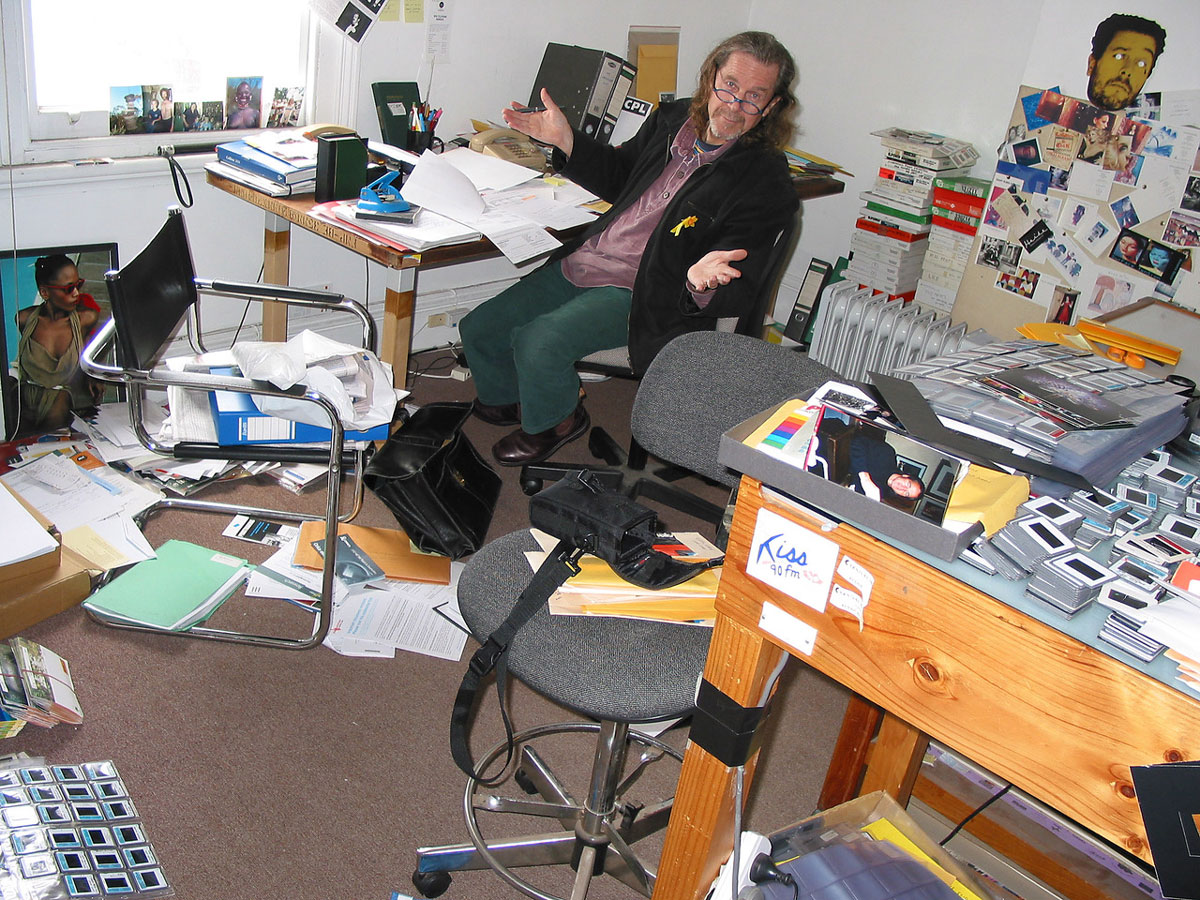
Rennie Ellis in his studio, photograph by Robert Ashton
The closure of the Rennie Ellis studio in 2003 left 39 cubic metres of inventory and a lot of the picture library prints to be returned to various photographers. An early decision was to operate from dedicated office and storage in St Kilda. This was risky as the overheads on top of fees for Manuela, would be relentless from day one.
Regular cash flow was also essential to fund promotions, activities and products. Early strategies for fund raising were the sale of new limited edition prints as well as vintage prints. The new prints were made by custom printers. Images needed to be circulated and made available as digital files and a scale of fees levied for permissions to reproduce.
A website had to be developed that was easy to use and critically to order from directly as the new premises in St Kilda were not intended to run as a dealer gallery. Information on Rennie Ellis’s career was loaded up plus regular news of the Archive’s productions and projects and links or extracts of ever growing numbers of reviews as exhibitions unfolded.
These include Robert McFarlane’s sensitive and thoughtful review of the No Standing only dancing exhibition at the National Gallery of Victoria in November 20085. Such an exhibition had been a long held wish of Ellis and its mounting marked a growing understanding of his significance and achievement.
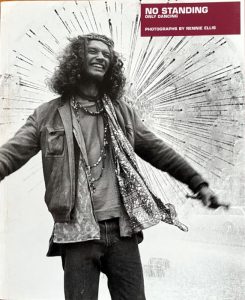
Book cover: No Standing Only Dancing
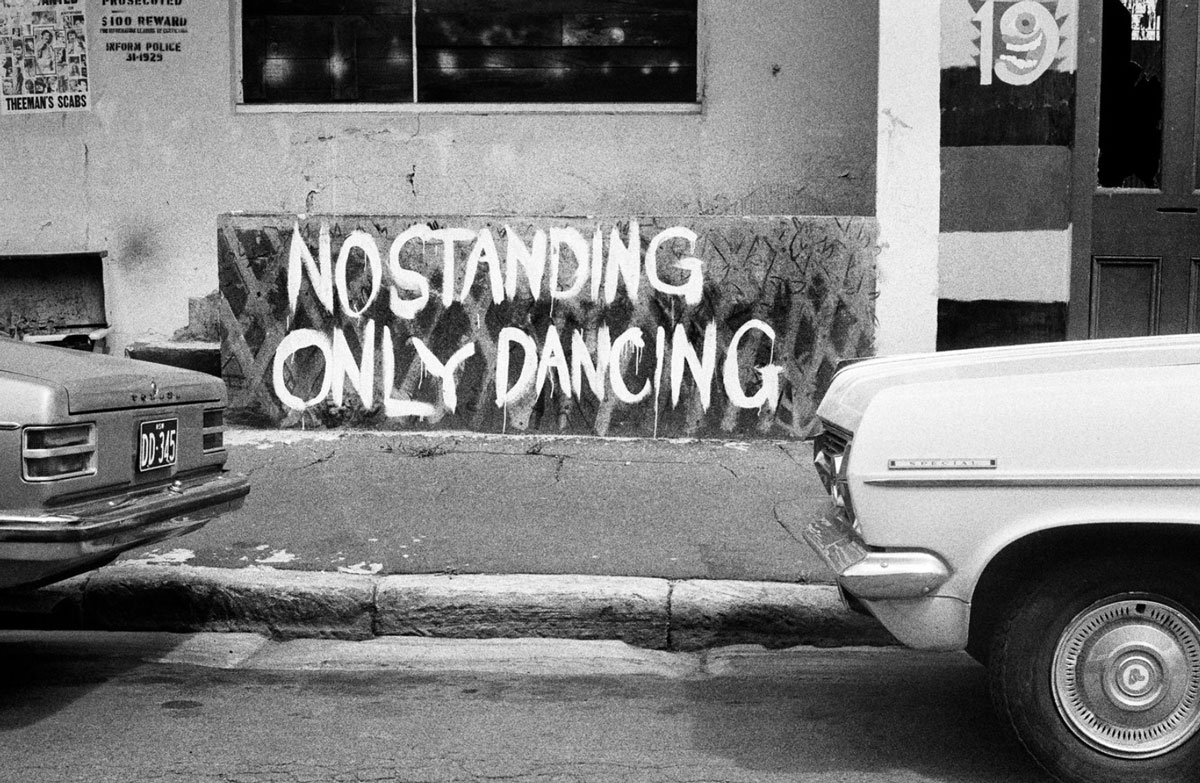
No Standing Only Dancing, Rennie Ellis 1974
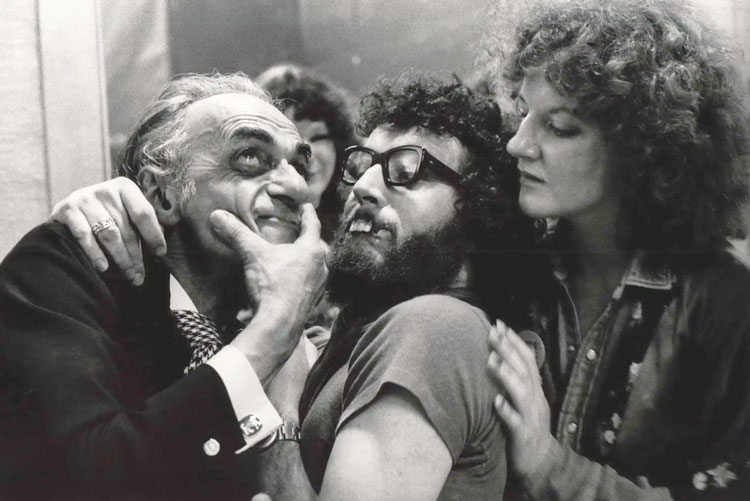
Athol Shmith, Rob Imhoff & Carol Jerrems at Brummels, Rennie Ellis 1975
Other projects drew attention to Ellis’s pioneer publication with Wesley Stacy on Kings Cross of 1971, as well as the many picture books Ellis published. His pioneer role as founder of Brummels in Toorak, the first dedicated photography gallery in Australia in 1975, was recognised through an exhibition at the Monash Gallery of Art (now Museum of Australian Photography) in 2011.
A secret of the success of the archive has also been Manuela Furci’s freedom to act without being subject to a committee or foundation (no committees!) and that the Ellis family have taken nothing out of the business. Everything has been ploughed back into its development and the cause of Rennie’s legacy.
Once established and with some funds form early fundraising activities, Manuela mounted exhibitions and undertook a range of projects from the archive over the years culminating in 2017 in the final stage of a program of acquisition over seven years of the archive by the State Library of Victoria6.
After the Library acquisition the Rennie Ellis Archive was able to continue with promotions, print sales, publications and exhibitions from digital files. Two hard back books Decade and Decadent on the 1970s and 1980s were published by Hardie Grant in 2013. These were based on mock up for a book that Rennie Ellis was about to publish before his death7.
Over time the Archive produced tote bags, and licensed images to Kleins skincare products and skate boards and T Shirts to the Australian company Pass~Port.
A private archive is a business and can’t be idle. For the director new ideas must be running in the back of the mind no matter how busy or demanding the current projects such as ‘Photo of the month’ featuring lesser known images which has continued to prove very popular.
Most recently from late 2024 to May 2025 the State Library of Victoria had a multimedia print and slide show and ephemera exhibition Melbourne Out Loud: Life through the lens of Rennie Ellis drawing on their Ellis collection8. A long interview with Manuela Furci was recorded by the State Library Victoria for the Melbourne Out Loud.
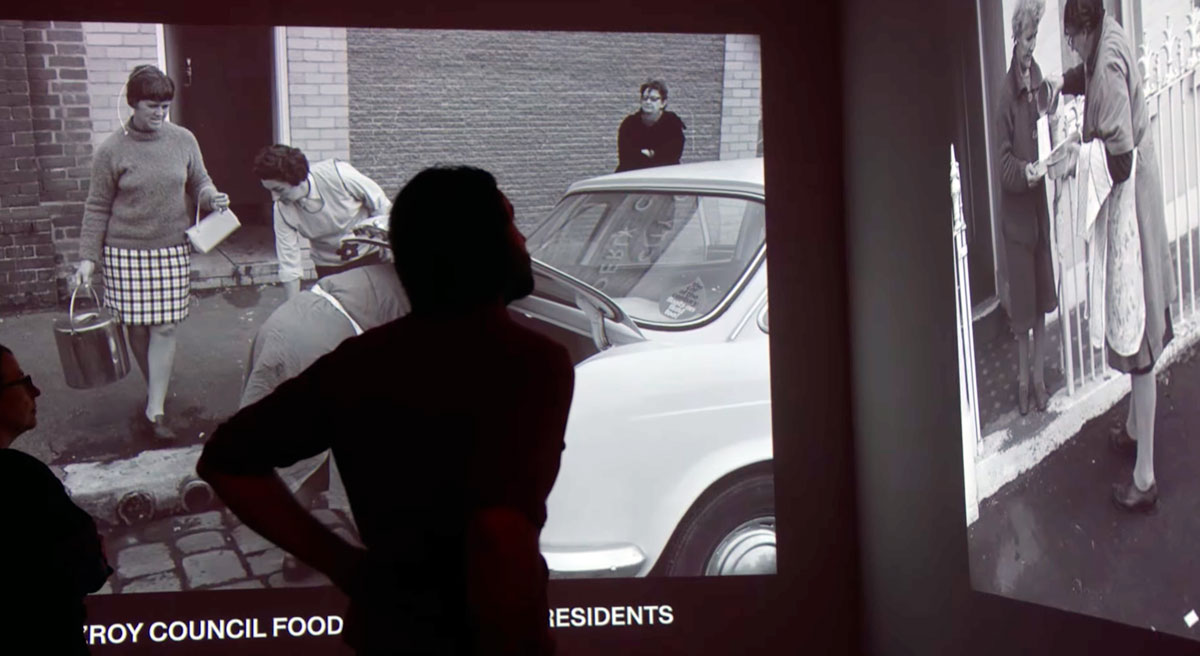
Screen shot from the Victoria State Library’s video
The success of the Rennie Ellis archive rests on the range and quality of his work.
We owe our thanks to Manuela Furci for the success of this important national photographer’s archive. This happened because of her dynamism, enthusiasm, her business-like approach to the service and because she kept the fun in there.
It was so obviously a dedicated effort by Manuela matched with the wise and patient support by Kerry Oldfield. Today the Archive is financially robust and is managed through the family. Manuela has stepped back as Director but currently continues as a consultant and agent for the Archive.
Of her time with the Rennie Ellis Archive, Manuela told me:
I strongly believe that I was fated (as did his widow, Kerry) to be the caretaker of Rennie’s Archive and his legacy.
The biggest challenge was the volume of images to edit (over half a million) and that without the assistance of the late Michael (Mikey) Williams, would have been an impossible task to complete. Mikey who had worked with Rennie, was a talented photographer in his own right and had an incredible eye to select what he labelled the “hero images”. Together we curated images to redefine Rennie Ellis as one of Australia’s great photographers of his time.
It has been a difficult journey to keep the heart of the Archive beating — both financially and creatively, but it has been one of the most rewarding endeavours in my life and I do believe that Rennie, wherever his soul may be hovering, would be smiling.
————————————————————-
The archive is now managed through the family — click here
————————————————————-
Notes:
1. The Rennie Ellis Archive.
Dupain archival material is also held by the Capon Library, Art Gallery of New South Wales and the National Gallery of Australia Research Library in the Clare Brown Max Dupain Archive.
2. Tony Penrose’s biography of his mother Lee Miller was published in 1989.There was an exhibition of Lee Miller photographs at Ivan Dougherty Gallery Sydney in 1999 and a movie was released that year.
3. The Archive continues a range of activities. see the archive link. The Max Dupain & Associates commercial archive was acquired separately by SLNSW from Eric Sierens .
See also The History Council of NSW
and an article in the Sydney Morning Herald on the purchase of the archive ( paywall page)
4. The Michael Williams Archive
5. A later review was of Rennie Ellis show Of Serpents and Marooned Maidens, at MOSSGREEN February 2012.
6. See “news & exhibition” webpage
and ‘Acquisition ropes in 60,000 items’ Ragtrader, 21 August 2017.
The Library collection has over half a million items including prints, negatives, slides and contact sheets, books ‚notebooks and papers.
8. A review by Martyn Jolly of the Victorian State Library exhibition: exhibition Out Loud.
————————————————————-
Other Links:
Parts of the Max Dupain inventory is available online.
My former piece on Photographers’ Archives
63 images held by the National Gallery of Victoria — click here
The Museum of Australian Photography — click here
Josef Lebovic Gallery — put Rennie Ellis in the search for 16 images for sale.
Hardie Grant — publisher of four books
National Portrait Gallery (Canberra) — Rennie Ellis 2006 exhibition
2004 exhibition article in The Guardian Australia
2014 Art Blat Review: ‘The Rennie Ellis Show’ at Monash Gallery of Art
————————————————————-
Main Contents: lots more Parting With Your Art